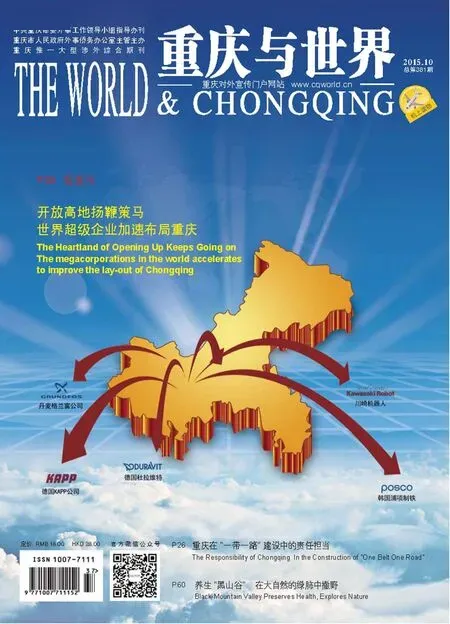摈弃“山寨”,打造“中国创造”金字招牌
摈弃“山寨”,打造“中国创造”金字招牌
这是一个老生常谈的话题,又是一个需要严肃面对的话题。
8月31日,亚布力中国企业家论坛2015年夏季高峰会在重庆举办。论坛上,联想集团总裁兼首席执行官杨元庆再次大声呼吁:“要走出去建立国际化企业,创新很关键。”他说,现在阻碍中国企业创新发展的一个最大因素是山寨文化。“什么是山寨思维?通俗点说:企业看到好产品、好模式,直接拿来照抄,乐于做山寨。”
山寨文化,说得通俗点就是仿造。仿造与创造截然不同,仿造是企图亦步亦趋地坐收渔利,而创造则是花大力气、下真功夫进行创造性研发。
比如,去年苹果公司发布了首款智能手表,但就在发布会仅仅过去30分钟后,深圳就出现山寨版的苹果手表。速度之快,令人瞠目结舌。今年国内一座高仿的埃及古文物狮身人面像引起了埃及文物部门的高度关注,并遭到埃及文物部门向联合国教科文组织投诉……
如此山寨版,屡屡出现。它们的一再面世,说到底是“山寨思维”在作祟。
“山寨”产品之所以畅行,有它的一些道道儿。比如,投入少、价格低、销售畅。缺乏创新意识的一些本土企业,信奉着“薄利多销”的陈旧营销模式,把大量的精力放在了仿造上,而不是自己创造。
热衷“山寨”的背后是急功近利的浮躁心理。这些年,尽管国家大力倡导科技创新,转变观念,国内产品正在由“中国制造”向“中国创造”转型,各级政府也对创新企业提供了很多优惠政策和资金帮扶,但收效却与人们的期望存在较大差距。急功近利思维没有清除干净,企业就会只顾眼前利益忽视创新,对需要慢工出细活的技术创新缺乏干劲。
“山寨文化”是一种畸形文化,是创新思维或缺的必然产物。要摈弃、杜绝“山寨思维”,一来需要完善对“山寨思维”说不的制度规则,将山寨牟利列入知识产权、著作权等禁区,或通过司法诉讼追究侵权责任,或通过行政管理给予违规惩罚,真正让恶意山寨者付出比获利更大的代价。同时,需要在地方政绩考核中,对山寨文化的冲动作出显性的约束,不让“拿来主义”成为政绩的亮点。
实践证明,只有具备创造性的产品,才能赢得持久性的市场。我们需要的是:转变“山寨”思维,打造“中国创造”。我们需要将“山寨”的干劲和智慧投入到创新中去,真正摘下“山寨”帽子,打造出“中国创造”这块金字招牌。
唐 纲
Proud to Be “Created in China”, Say “No” to Shanzhai Culture
We have all heard the cliché of so-called copycat culture, and in China, we call it “Shanzhai”, which has real truth and becomes serious issues in current China market.
On August 31, YABULI China Entrepreneur Forum 2015 Summer Seminar successfully held in Chongqing. Yang Yuanqing, CEO of Lenovo, reaffirmed that to build an international company or a global brand, we need more focus on being innovative. He believes that copycat culture will cast terrible impacts on the social atmosphere of innovation. “What is so-called copycat culture? Some companies believe it is a power of folk innovation while some point out it is a byword of commercial plagiarism.
About so-called copycat culture which is welcomed in China, some people suggest it is obviously the manifestation of folk innovation. It certainly posts a threat to the social atmosphere of being creative and innovative.
Take Apple’s iWatch as a signifi cant example, the copycat products were appearing in Shenzhen market only 30mins after Apple’s iWatch launch event. The whole world was all shocked by China’s copycat culture. There is also another issue that a China-copycat antique Egyptian Sphinx drew negative attention from Egypt cultural relics department and UNESCO. They criticized the fake one has Egyptian culture debased and profaned.
The frequent appearance of copycat products in China market is cause by so-called copycat culture.
“Shanzhai”products which refer to Chinese imitation and pirated brands and goods are welcomed in markets because of less-invested, lower-priced. Companies that like manufacturing “shanzhai” believe small profi ts but quick turnover in their business. Hence, these companies become aggressively focus on imitating.
In the instant gratifi cation culture, “Shanzhai” manufactures and companies expect anxiously to achieve quick success and instant benefi ts without their own efforts in product design and development. Recent years, though the government has been proposing “high-tech innovation” initiative by the transit from “made in China”to “created in China”, markets deplored manufactures and companies lack of good manners and willing-to-learn attitude to being innovative.
“Shanzhai Culture” is a kind of deformity culture that should not be welcomed anywhere. Shanzhai products come from copycatting and plagiarizing, and often infringes on intellectual property rights. So to avoid more and more companies trying to do their business under Shanzhai culture, the Chinese government needs to have strict regulations to boycott copycatting products. If illegal "shanzhai" is not held accountable, society is rewarding copycats while punishing innovators. The result could be disastrous. Everyone will choose to copy others. The market will be fl ooded with the same kind of poorly-designed and badly-made products that have short lives and lack after-sale services.
Some believe that "Shanzhai" has become a culture of its own and it represents non-mainstream ideas and innovations ever since “Shanzhai” popularity in the markets. However, it is in fact harmful to establish favorable environment for business and opening up. The charm of “made in China” is actually the talent from“created in China”.
Tang Gang

